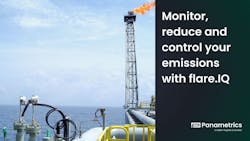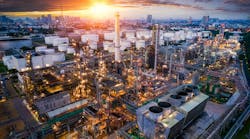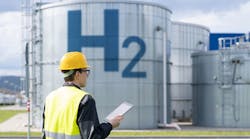Operations with flare gas have very specific responsibilities to their communities, environment, and employees. Safely disposing of flare gas must be done within government mandated regulations. In the UK, flaring is regulated by the Department of Trade and Industry (DTI), which develops the government policy for oil and gas fields as well as the UK’s territorial waters. In other nations, the ministry responsible for oversight of hydrocarbon resources typically oversees flaring. Additionally, the Emissions Trading Scheme (ETS) has been monitoring the emission levels of 11,000+ plants and facilities across the EU (plus Norway, Liechtenstein and Iceland) since 2005.
In oil and gas operations specifically, accurate and reliable flare optimization is the key for improved safety, increased Return on Investment (ROI), and risk mitigation. Optimization of an operator’s flare is also proactive in regard to climate change, staving off the looming issue of harmful emissions coming from incomplete combustion or black smoke and odors that can exacerbate risks and result in brand damage.
The solution? Safe, cost-effective solutions from an experienced and industrial-minded partner with deep, proven expertise in oil and gas operations. Working with Panametrics, a Baker Hughes business, and flare.IQ offers a partnership with a company versed in flare optimization via proactive management and control for all assisted flares.
What exactly is flare optimization?
Flare gas characteristics
Handling gas combustion is a highly regulated practice with myriad safety and health implications. Flare stack pressure, volume flow, and gas composition inherently differ significantly over short periods of time. This introduces specialized requirements to ensure reliable, accurate flare management and control.
Characteristics of a flare that needs to be monitored and optimized downstream oil and gas include:
- Variable flow rates (0.1-400 ft/sec; 0.03 to 120 m/sec), meaning a 4000:1 turndown ratio
- Variable composition (H2 to C6+)
- Corrosive and/or wet environments (H2S, HF, H2O)
- Low pressure, close to atmospheric conditions
- Wide temperature range (-310°F to 482°F; -190°C to 300°C)
Conventional flow meters
Conventional flow meters (i.e., differential pressure flow meters and thermal mass meters) do not align well with intrinsic characteristics of flare gas operations. They are simply not meant to meet the needs of the characteristics outlined above. There is also limited technology available for these types of meters for such a large turn down range; these meters can’t measure both very low and very high flows – something that is characteristic of a flare stack. To elaborate, a conventional flow meter may fail to meet the bar for the following reasons:
Variable flow rates
They are not engineered for the range of flare gas flow rates. There are limitations regarding maximum flow capacity, that can leave a conventional flow meter unable to adequately help during a flaring emergency event – when it is needed most.
Variable composition
A conventional flow meter is also sensitive to composition changes, which does not allow it to be reliable enough to handle burning variable gas mixtures.
Corrosive
Build-up and corrosion on conventional flow meters can cause significant drifts, thus introducing inaccuracies and requiring frequent physical maintenance and calibrations on traditional flow meters.
Low pressure
Pressure drops may compromise proper flare gas purging.
Wide temperature range
Traditional meters may have lower levels of reliability or accuracy within wide temperature ranges and introduce unnecessary risks.
Ultrasonic technology
Ultrasonic technology uses ultrasound to measure velocity and calculate volume and mass flow. The technology is a superior flare tool in multiple categories and aligns well with intrinsic characteristics of flare gas operations. Ultrasonic technology applies to measurement and optimization.
Flare measurement: Ultrasonic is by far the technology of choice for measurement. No other technology can cope with the inherent challenges of flare measurement. The primary advantage is the huge turndown ratio and the readability from low end to high end.
Flare optimization: It is equally important to measure and optimize the combustion efficiency at the flare tip to ensure only CO2 goes into the atmosphere and not CH4 which are more potent gases from a global warming perspective. Smart imaging cameras can also be used with ultrasonic flare measurement to assess combustion efficiency (CE%). Even a basic camera that just reports the flame image to the control room for manual adjustment is helpful. About 60% of optimization is done through cameras currently.
Ultrasonic technology fits the characteristics of flare optimization in several ways. Related to variable flow rates, ultrasonic has almost zero flow to gas velocities exceeding 400 ft/sec or 120 m/sec.
Ultrasonic technology also uses sound of speed to calculate molecular weight of the flare gas mixture, and the algorithm automates steam usage and composition accordingly. Customized materials can be used to prevent corrosion with ultrasonic meters, and ultrasonic is a next-gen technology that can also handle a wide temperature range. Finally, there are higher levels of reliability and accuracy than are found with traditional flow meters.



